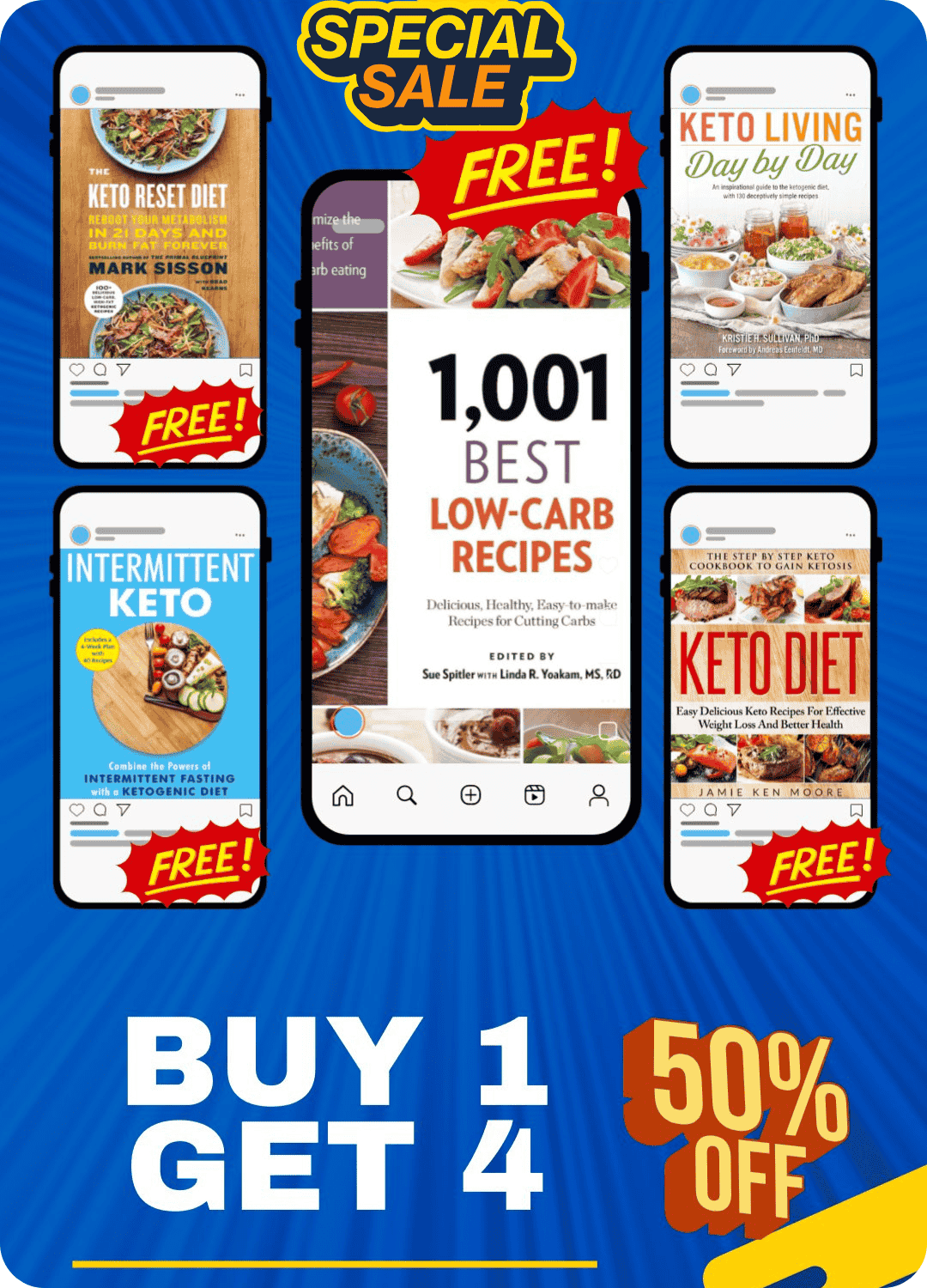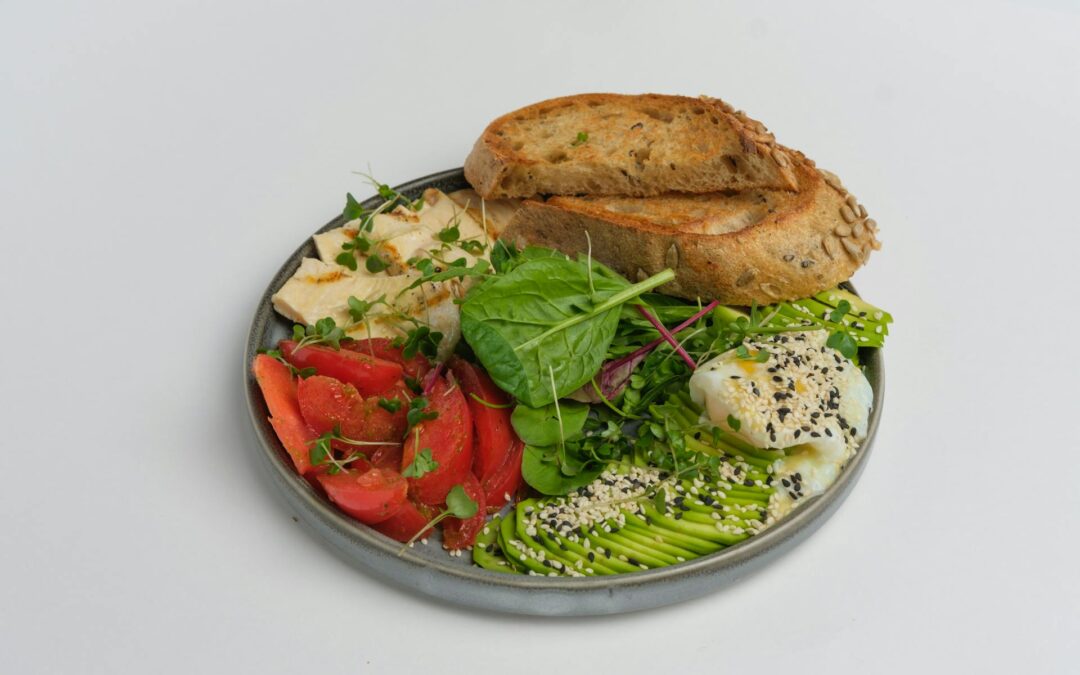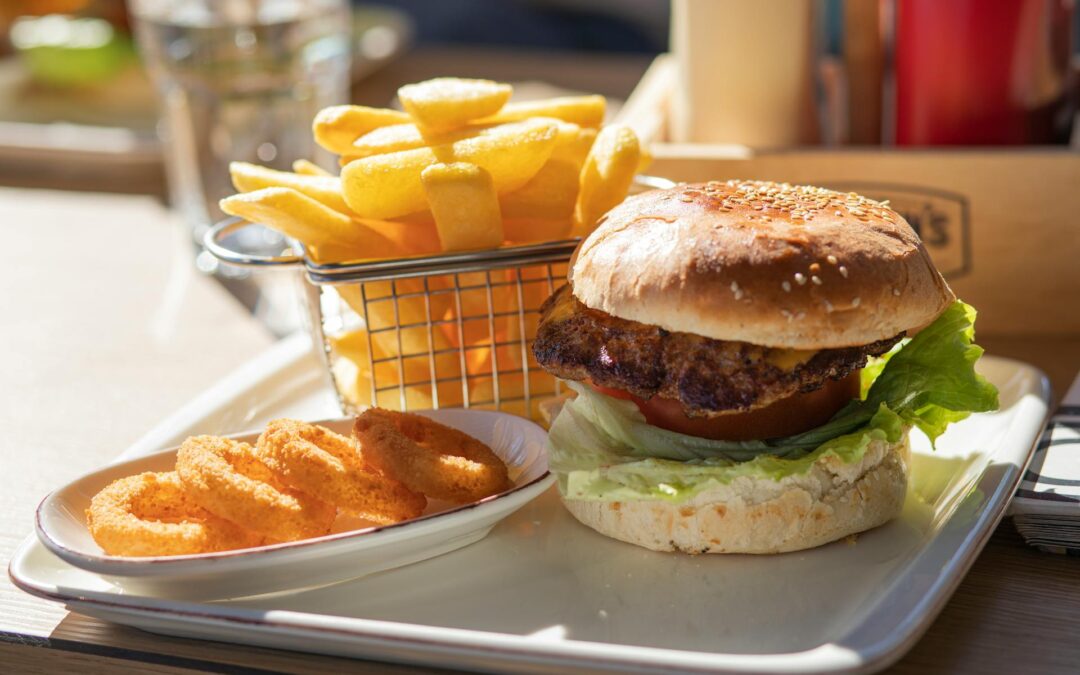Managing diabetes doesn’t mean giving up snacks or feeling hungry between meals. Choosing the right low-carb snacks can help diabetics maintain stable blood sugar and avoid energy crashes. Think of your blood glucose like a car’s fuel gauge – you want steady fuel, not sudden spikes. By sticking to snacks with minimal carbs, plus good fiber and protein, you can curb cravings and keep energy levels even.
Have you ever wondered why diabetics need special snacks? Or which foods won’t send your glucose on a rollercoaster? In this guide, we’ll break it all down in simple terms. You’ll learn practical snack ideas (from blueberries to cheese crisps), easy recipes, and smart tips for meal planning. We’ll also cover how these snacks fit into keto or fasting regimes. Ready to make snacking your new secret weapon for healthy blood sugar? Let’s dig in!
Why Low-Carb Snacks Matter for Diabetes
Carbohydrates break down into sugar (glucose) in the body, which raises blood glucose levels. For someone with diabetes, the body’s insulin response is impaired, so managing those sugar spikes is crucial. Snacking on low-carbohydrate foods helps prevent sudden sugar surges, keeping glucose levels flatter. In practice, that means choosing snacks that are mainly protein, healthy fat, and fiber, with only a few carbs. (1)
Medical experts emphasize the power of carb control: “Reducing carbohydrate intake—the nutrient with the biggest impact on blood sugar—can improve glycemic control”. In one Stanford-led study, both ketogenic (very low-carb) and Mediterranean (moderately low-carb) diets significantly improved blood glucose and HbA1c levels in diabetics. The main takeaway? Limiting carbs (and especially added sugars and refined grains) is key to managing diabetes. (2)
Eating smaller, balanced snacks is like giving your body a gentle nudge of energy rather than a sugar sprint. This approach can help avoid the “yo-yo” swings in blood sugar that cause fatigue or cravings. In short, low-carb snacks keep you fuelled without revving the sugar engine too high.
How Carbohydrates and Blood Sugar are Connected
When you eat carbs, your digestive system turns them into glucose, which enters the bloodstream. The pancreas then releases insulin to move glucose into cells. In healthy people, this system works smoothly. But diabetics (especially Type 2 or insulin-resistant individuals) have trouble with insulin, so blood sugar can stay high for too long. Over time, chronic high glucose can harm blood vessels and organs.
The glycemic index (GI) is one way to measure how a food affects blood sugar. Foods with a high GI (like soda, white bread, candy) spike sugar quickly, while low-GI foods (like non-starchy veggies, nuts, most proteins) raise it slowly. However, GI doesn’t account for portion size, so many experts focus on carb grams per serving and overall balance instead. (3)
The bottom line? Every gram of carb counts. By choosing snacks that are low in carbs and high in fiber or protein, you slow down glucose absorption. For example, leafy greens or berries have carbs, but also fiber that blunts the impact. Similarly, foods rich in protein (meats, eggs, Greek yogurt) often have very few carbs. These factors together make snacks blood-sugar friendly.
Guidelines for Diabetic-Friendly Snacking
In practice, how low should your carbs be for each snack? Many diabetes educators suggest aiming for about 10-15 grams of carbs per snack (or even less). The UK’s KnowDiabetes program notes that snacks under 10 grams of carbohydrate are a “sensible” goal to help keep blood glucose in target. Similarly, EatingWell’s dietitians advise ≤15g carbs per snack and packing it with protein and fiber.
Key rules of thumb:
- Less than 15g carbs per serving. Many successful diabetics shoot for 10g or so. This keeps the “glucose spike” minimal.
- Combine macronutrients. Always pair carbs with protein or healthy fat to slow digestion. Studies and experts agree that “protein and fiber… help temper a rise in blood sugar”.
- Watch added sugars. Even a small packet of candy can crush your limit. Check labels—if sugar is an ingredient, it’s likely not the best snack. The American Heart Association notes that added sugars can hide in many treats.
- Portion control. It’s easy to overeat “healthy” snacks. Stick to serving sizes. As one guide points out, choosing snacks with ≤15g carbs and sticking to portion sizes is crucial.
By following these guidelines, your between-meal mini-meals can be both satisfying and supportive of glucose control.
Essential Nutrients in Diabetic Snacks: Protein, Fiber, and Healthy Fats
Think of your body like a slow-burning engine. After a snack, it’s best fueled by protein and fiber, not pure sugar. Protein (from meat, dairy, or eggs) and fat (avocado, nuts) delay stomach emptying, making you feel full longer. Fiber (from veggies, seeds, some fruits) physically bulks up foods without extra sugars. Together, they form a “speed bump” to glucose absorption.
- Protein: Every extra gram of protein can significantly blunt the spike from carbohydrates. For example, one large egg offers about 6.3g of protein and only 0.5g of carbs, making it nearly all protein. Greek yogurt, cottage cheese, or lean turkey likewise add sustenance with minimal sugar. (4)
- Fiber: Soluble fiber, found in berries, vegetables, and nuts, slows digestion. A half-cup of blueberries, for instance, packs ~11g carbs and 2g fiber—the fiber is why that 11g hits your blood more gently than 11g from juice. Many nuts and seeds also have fiber (almonds: ~3g fiber per ounce).
- Healthy Fats: Think monounsaturated fats in olives, avocados, and nuts. These don’t raise blood sugar and can make snacks more satisfying. For example, avocado slices or a spoonful of nut butter provide creamy richness and nutrients (potassium, vitamins) without sugar.
By aiming for a balance—some protein, a little fat, a dash of fiber—you create a self-stabilizing snack. It’s like pairing bread with butter instead of jam; the sugar is there but buffered by fat or protein. This blend is key to a snack that “won’t send your blood sugar sailing,” as dietitians say.
Top Low-Carb Snack Ideas
Ready for the fun part? Here’s a menu of delicious, low-carb treats that fit between meals. These ideas use whole foods and common ingredients. Feel free to mix and match!
- Fruits and Berries (Low-GI Fruits):
- Berries: Strawberries, blueberries, and raspberries are surprisingly low in carbs compared to tropical fruits. For example, ½ cup blueberries has only ~11g carbs (with 2g fiber). They’re also rich in antioxidants. Pair with a sprinkle of cinnamon or a few chopped nuts for a snack.
- Apples/Pears: Small apple slices (like a small gala apple ~85g) contain ~8g of carbs. Eat them with nut butter or a small cheese wedge to slow sugar absorption. (5)
- Melon: Cantaloupe or watermelon has high water content. An 80g melon slice is only ~5-6g carbs. Enjoy a few chunks with cottage cheese.
- Nuts, Seeds, and Nut Butters:
- Almonds: A handful (28g) of almonds contains 6g of fiber and nearly 3g of fiber. They pack protein and magnesium. Keep portions in check (nuts are calorie-dense). (6)
- Walnuts, Pecans, or Mixed Nuts: All are similarly low-carb, especially if unsalted or raw. Pistachios (¼ cup) have ~7g carbs and 2g fiber.
- Peanut/Almond Butter: 2 tablespoons of natural nut butter has around 4-6g carbs but 7-8g protein. Spread on celery sticks (“ants on a log”) or Greek yogurt.
- Seeds: Pumpkin or sunflower seeds (not in a sugary mix) are great with ~4-5g carbs per ounce plus fiber/protein.
- Dairy & Eggs:
- Hard-Boiled Eggs: Almost zero carbs, high protein. “One large egg provides ~6.3g protein and ~0.5g carbs”. Prep a batch at the start of the week.
- Cheese: String cheese, cheese cubes, or Parmesan crisps (made of just-baked cheese) can be as low as 1g of carbs per serving. Full-fat or low-fat works; pair with sliced bell pepper or cucumber.
- Greek Yogurt or Cottage Cheese: Go for plain varieties (not fruit-flavored). ½ cup of 2% cottage cheese has just ~5g carbs and 12g protein. Top with a few berries or nuts to taste.
- Greek Yogurt Bars: There are snack bars with Greek yogurt coated in dark chocolate; one from Clio has 16g total carbs but 8g protein (note: watch added sugar).
- Veggies & Dips:
- Veggie Sticks: Celery, cucumber, celery, or bell pepper strips are super low-carb (1-3g each). Pair with:
- Hummus: Provides protein and flavor. For example, 2 Tbsp hummus + carrots is ~15g carbs, but the fiber/protein helps. Try spicy hummus or guacamole.
- Nut Butter: As above, or make a Cucumber & Cream Cheese Roll-up: smear cream cheese on a cucumber strip, roll up with turkey or smoked salmon for extra protein. (7)
- Raw Veggies with Cheese: Slice veggies and dip in a soft cheese or tzatziki.
- Pickles: Crunchy dill pickles are high in salt but very low in carbs (~2g for a jar). Good to nibble on with cheese.
- Veggie Sticks: Celery, cucumber, celery, or bell pepper strips are super low-carb (1-3g each). Pair with:
- Lean Protein Snacks:
- Turkey or Chicken Roll-Ups: Wrap turkey breast slices around cheese sticks, avocado slices, or peppers. Turkey snack sticks (like Slim Jim style) often have virtually 0g carbs and lots of protein.
- Jerky: Beef or turkey jerky (check label for no sugar added) – typically 0-5g carbs per serving.
- Tuna or Chicken Salad: Make a quick salad (canned tuna with mayo, celery, spices) and scoop with cucumber slices.
- Snackable Tuna Packs: Those tuna pouches with olive oil – pair with cheese and olives.
- Low-Carb “Carb” Swaps:
- Kale or Veggie Chips: Bake kale chips with olive oil and salt. Crispy and ~1-2g carbs per handful.
- Cheese Crisps: Like Whisps (parmesan crisps) – roughly 1g carb per ounce. Crunchy substitute for chips.
- Low-Carb Crackers: There are crackers made from almond flour or flax (e.g., flaxseed crackers at ~1-2g carbs each). Enjoy with cheese or nut butter.
- Other Savory Snacks:
- Seafood Bites: Canned sardines or smoked salmon on a rice cake (lower carbs than bread) or a cucumber slice.
- Boiled Edamame: ½ cup shelled has ~7g net carbs (about 12g total with fiber). Good source of plant protein.
- Olives and Cheese: Greek olives and feta cheese make a Mediterranean snack with fat and minimal carbs.
- Sweet Treats (in moderation):
- Dark Chocolate: A few squares of 70% (or higher) dark chocolate. 2 squares (~20g) might have ~10g carbs, but mostly sugars from cocoa. Pair with nuts or fruit to slow its effect.
- Berries in Cream: A small handful of strawberries or raspberries with whipped cream or coconut cream. The fruit adds natural sweetness and fiber.
- Homemade Energy Bites: You can mix small amounts of oats or nut flours with peanut butter and a touch of sweetener to make “fat bomb” style bites. Aim to keep carbs low by adding protein powder or seeds.
These examples show there’s no need for bland, tasteless snacks. With some creativity, you can enjoy filling, flavorful bites that won’t derail your glucose. Mix colors and textures: crunchy nuts, creamy cheeses, juicy berries. Variety keeps snacking interesting, which makes it easier to stick to your plan.
DIY Healthy Snack Recipes & Prep Tips
Batch-prepping snacks takes the guesswork out of the day. Here are quick do-it-yourself ideas:
- Veggie Snack Packs: Prepare small containers of cut veggies (cucumber, cherry tomatoes, carrot sticks, olives). Include a little container of hummus or guacamole in each.
- Make-Ahead Hard-Boiled Eggs: Boil a dozen eggs at once and refrigerate. Peel and keep them ready for the week – plain or with a dash of pepper.
- Energy Bites: Mix almond flour, a bit of peanut butter, cocoa powder, and a pinch of stevia/sugar substitute. Roll into small balls (no-bake). Each might have only ~3-5g net carbs if portioned small.
- Trail Mix Control: Instead of buying honey-roasted mixes, make your own. Combine raw almonds, walnuts, pumpkin seeds, and unsweetened coconut flakes. Add a few freeze-dried berries for flavor. Keep each portion about ¼ cup (~4g carbs).
- Cheese and Charcuterie Plate: On Sunday, slice cheeses, portion salami/turkey, and store on a platter in the fridge. When hungry, grab a few slices of each with pepperoncini or pickles.
- Yogurt Parfaits: Layer plain Greek yogurt with a sprinkle of chia seeds and a few berries in small mason jars. Refrigerate – grab-and-go sweetness and protein.
Prep tip: Label your snacks with carb counts if possible. This helps you stay aware (for example, note “6g” on a container of nuts). Over time, you’ll learn which snacks fit best into your daily carb budget.
Snacking with Keto and Intermittent Fasting
Many diabetics explore keto (very low-carb) diets, which heavily overlap with low-carb snacking. Most snacks above (nuts, cheese, avocados, meats) are keto-friendly by default. Since keto suggests ~20–50g carbs/day, any between-meal snack should be counted carefully. Keto snacks emphasize fats (avocado, olives) and protein over carbs.
For those doing intermittent fasting (IF), snacking is a trickier topic. IF usually means long fasting windows, but if you do need a small snack to break a fast or curb hunger (for example, in a 16:8 plan), choose the lowest-carb option: a handful of nuts or a boiled egg. Many experts recommend keeping fasting windows intact if possible, but if you must snack, know that it technically breaks the fast. In a keto context, a “fat bomb” (coconut oil, cocoa, nut butter) is sometimes used as a mini-breaker because it’s low carb, though it still triggers some insulin response.
Always personalize: Some people do a “modified fasting snack” (like bone broth or a small fat/protein snack) and still see benefits.
Ultimately, if you are combining low-carb snacking with IF, make each snack count nutritionally (protein + fat). For instance, eating half an avocado with olive oil dressing or a scoop of peanut butter on celery will add calories but minimal carbs, and can keep you going until your next meal window.
Smart Snacking Tips and Portion Control
Here are some pro tips to level up your snacking game:
- Plan Ahead: “If you fail to plan, plan to snack on chips.” Always have your approved snacks on hand—store nuts in desk drawers, pre-pack containers, etc. This avoids grabbing a candy bar in a pinch.
- Read Labels: When you buy packaged foods (crackers, bars, yogurt), check the Net Carbs (total carbs minus fiber/sugar alcohols) and serving size. Even “diet” snacks can hide 10g+ carbs if you aren’t careful.
- Stay Hydrated: Sometimes thirst masquerades as hunger. Drink water before snacking. Proper hydration can stabilize appetite.
- Practice Portion Control: Buy or prep in single servings. For example, divide nuts into small bags (one ounce each) and stash them away. It’s easy to overeat straight from a big container.
- Mix Macronutrients: Never eat a high-carb snack alone. Always combine. For example, if you have apple slices (8g carbs), pair them with peanut butter (protein/fat) or cheese.
- Fiber Boost: Add vegetables to smoothies or snacks. A handful of spinach in a smoothie or chopped zucchini with dip adds nutrients with almost no extra carbs.
- Sugar-Free Swaps: Choose naturally low-sugar versions of snacks. Unsweetened Greek yogurt instead of flavored, whole fruit instead of juice, etc.
- Listen to Your Body: Check your blood sugar sometimes after trying new snacks. Over time, you’ll learn which foods are safest for you. Everyone is a little different in how they respond.
- Rotate Your Snacks: Avoid monotony to stick with healthy options. Vary your nuts, veggies, cheeses, and recipes so you don’t get bored.
- Seek Support: A nutritionist or diabetes educator can help tailor snack plans, especially if you also have weight or other goals.
By treating snack time as another part of your meal plan—rather than an afterthought—you can make every bite work in your favor. The guideline from dietitians says: “Choose snacks that have 15 or fewer carbs per serving and also contain fiber or protein, and try to stick to portion size”. It works!
Snacks to Avoid for Diabetics
Not all snacks labeled “diet” or “healthy” are safe. Here are the usual suspects to skip or enjoy very rarely:
- Sweet Drinks & Juices: Even 100% fruit juice can spike sugar quickly (e.g., 8 oz apple juice ~27g carbs). Stick to water, herbal tea, or sparkling water with lemon.
- Sugary Sweets and Desserts: Cookies, candy bars, regular ice cream, muffins – high in sugar and carbs. They cause big spikes. If you crave sweets, try dark chocolate or the yogurt bars mentioned above.
- Starchy Chips & Crackers: Potato chips, corn chips, pita chips – these are pure starch (high GI). Instead, choose kale chips or veggie crisps as discussed.
- Packaged Baked Goods: Store-bought donuts, pastries, muffins – loaded with white flour and sugar. Avoid these catch-all carbs.
- Granola Bars/Cereal Bars: Many have 15-25g carbs or more. Read labels closely.
- Sugary Yogurts: Flavored yogurts often have 15-20g of sugar per cup. Opt for plain Greek yogurt and sweeten yourself lightly.
- High-GI Cereals: Even “granola” or sweetened cereals are a no (serve as snacks).
- Dried Fruit: Though natural, it concentrates sugar (e.g., ¼ cup raisins ~30g carbs).
- Energy/Sports Bars: Often just candy bars in disguise. They can have 20-30gof carbs.
The principle: If it looks processed and sweet, likely skip it. Instead, focus on whole foods. Think “eat fresh” – real meats, cheeses, seeds, and vegetables. You’ll avoid many hidden sugars and stay in your healthy-snack zone.
The Bottom Line
Snacking can be both enjoyable and diabetes-friendly. By choosing low-carb, high-protein/fiber bites, you keep blood sugar steady and hunger at bay. Aim for snacks under 10–15g carbs, as recommended by health experts. Experiment with nuts, veggies, eggs, and good fats like avocado. With some planning and the tips above, you’ll feel empowered between meals.
Craving something yummy? Reach for a handful of almonds or a cheese-and-berry plate instead of chips or cookies. Your body will thank you with steadier energy and healthier glucose levels.
(Ready for your new snack plan? Check out our recipes and guides at Our Healthy Diet Site, or learn more about keto and fasting for diabetes!)
Frequently Asked Questions
Q: What are the best low-carb fruits for diabetics to snack on?
A: Berries (strawberries, blueberries, raspberries) are top choices because they have relatively low sugar and high fiber. For example, ½ cup of blueberries has about 11gof carbs and 2g of fiber. Other options include cherries, apples (in small portions), and citrus segments. Always pair fruit with protein (like cheese or nuts) to slow absorption.
Q: Can diabetics eat nuts or seeds as snacks?
A: Yes! Nuts and seeds are excellent diabetic snacks. They contain little net carbs, good fats, and fiber. For instance, a 28g handful of almonds has under 6g of carbs and ~3g of fiber. Pumpkin seeds and walnuts are similar. Just watch portion size, as calories add up.
Q: How many carbohydrates should a diabetic snack contain?
A: Generally, aim for no more than 10–15 grams of carbohydrates per snack. Keeping it around 10g is often recommended to avoid major glucose spikes. The exact number can vary by individual, but the lower end is safer to maintain steady sugar levels.
Q: Are protein snacks good for diabetes?
A: Absolutely. Protein-rich snacks (eggs, cheese, Greek yogurt, turkey) help stabilize blood sugar and keep you full. Proteins have little direct impact on blood glucose and blunt the effect of any carbs you do consume. Think of protein as your “sugar shield” in a snack.
Q: Can I snack during intermittent fasting?
A: In strict intermittent fasting, any snack breaks the fast. However, if you feel you must have something, choose very low-carb options (like a few almonds or a boiled egg). These will cause minimal insulin response. Ideally, plan your meals so you stay satisfied through the fasting window, but if needed, pick a high-protein, low-carb snack to minimize interruption.







0 Comments